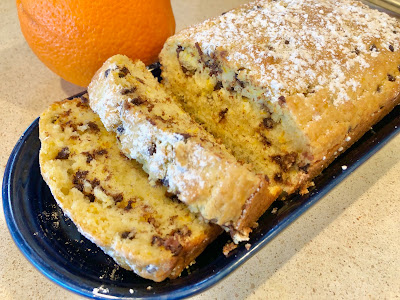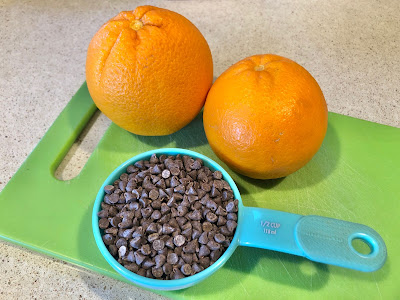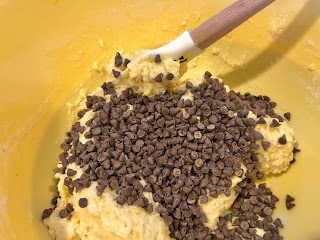
Recipe: Quick buttermilk bread includes plenty of zest

delightfully of fresh orange. (Photos: Kathy Morrison) |
Pairing orange and chocolate is my kind of delicious. I've always loved See's orange creams, chocolate-dipped orange peel and Swenson's Swiss orange chip ice cream. I know not everyone appreciates the marriage of chocolate and fruit; it's a personal preference.
But I also feel that if orange is supposed to be a prominent flavor in something, it really needs to stand out. Orange is so sweet that it can easily be overwhelmed by spices or other ingredients. So in adding chocolate to this quick bread, I made sure the orange flavor wasn't wimpy: The bread has zest from two entire navel oranges.
The recipe is based on a terrific basic buttermilk quick bread from thekitchn.com ; the writer Emma Christensen offers 10 other variations , and ideas to made your own favorite combination. So if you'd prefer coconut, or chopped nuts, or crystalized ginger with your orange, or no orange at all, jump in there. I'll stick with my very orange-y chocolate chip loaf and be quite happy.
Orange chocolate chip quick bread
Adapted from thekitchn.com
Makes 10 slices
Ingredients :
2 cups unbleached all-purpose flour
1/2 cup granulated

sugar
1-1/2 teaspoons baking powder
1/2 teaspoon baking soda
3/4 teaspoon salt
Zest from 2 medium or large navel oranges
1 cup buttermilk
1 large egg
1/4 cup unsalted butter, melted and cooled slightly
1/2 teaspoon vanilla extract
1/2 cup mini chocolate chips
Powdered sugar for topping, optional
Instructions :
Heat oven to 350 degrees. Grease a standard 9-by-5-inch loaf pan with cooking spray.
In a large bowl, stir or whisk together the flour, sugar, baking powder, baking soda, salt and orange zest.

In a medium bowl or glass measuring cup, stir together the buttermilk and the egg until blended, then stir in the melted butter and the vanilla extract.
Pour the liquid ingredients over the flour mixture and stir just until moistened. Carefully fold in the mini chips -- you don't want to overmix this batter.
Pour the batter into the prepared pan and even it out into the corners. Bake for 45 to 50 minutes, or until top is golden and a toothpick inserted in the center comes out clean. Let the bread cool in the pan for about 10 minutes before removing it. If desired, dust the top with powdered sugar before slicing.
Comments
0 comments have been posted.Sacramento Digs Gardening to your inbox.
Sites We Like
Garden Checklist for week of July 21
Your garden needs you!
* Keep your vegetable garden watered, mulched and weeded. Water before 8 a.m. to reduce the chance of fungal infection and to conserve moisture.
* Feed vegetable plants bone meal, rock phosphate or other fertilizers high in phosphate to stimulate more blooms and fruiting. (But wait until daily high temperatures drop out of the 100s.)
* Don’t let tomatoes wilt or dry out completely. Give tomatoes a deep watering two to three times a week.
* Harvest vegetables promptly to encourage plants to produce more. Squash especially tends to grow rapidly in hot weather. Keep an eye on zucchini.
* Pinch back chrysanthemums for bushy plants and more flowers in September.
* Remove spent flowers from roses, daylilies and other bloomers as they finish flowering.
* Pinch off blooms from basil so the plant will grow more leaves.
* Cut back lavender after flowering to promote a second bloom.
* It's not too late to add a splash of color. Plant petunias, snapdragons, zinnias and marigolds.
* From seed, plant corn, pumpkins, radishes, winter squash and sunflowers.